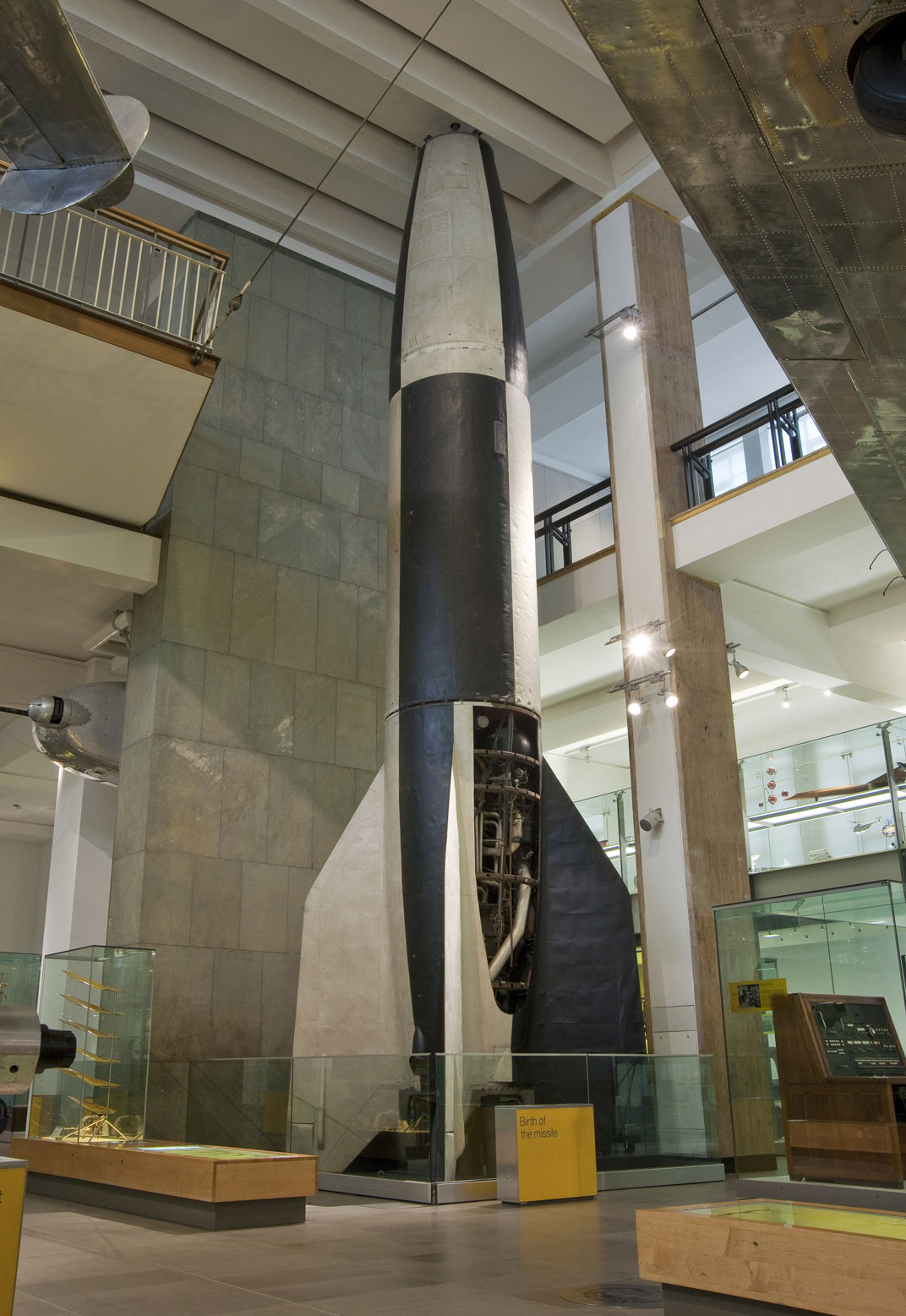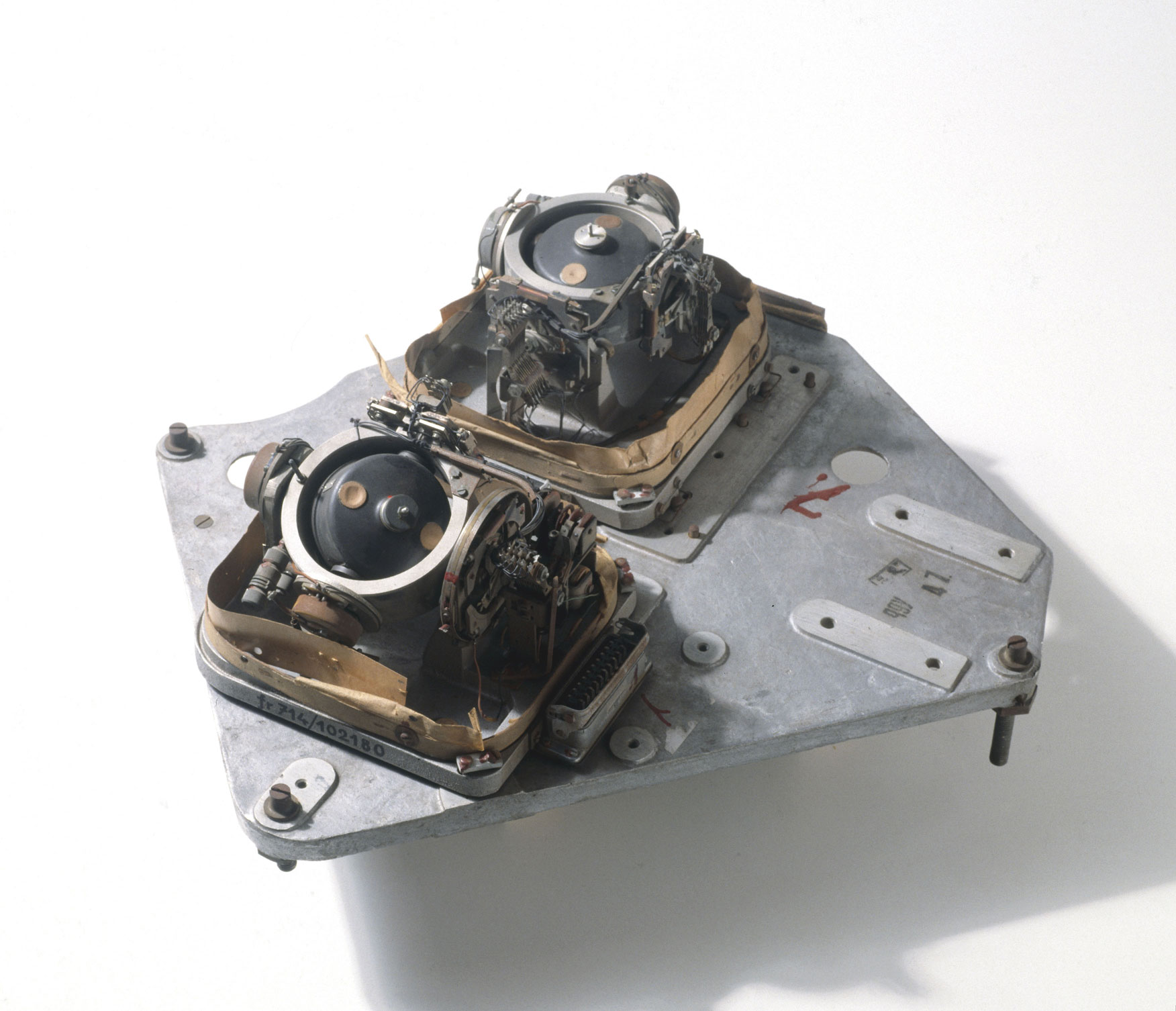On 8 September 1944 Professor Jones and his colleague turned suddenly to each other in their Whitehall office and in unison said, ‘That’s the first one’. London had experienced four years of explosions from Luftwaffe bombs so this latest blast was hardly remarkable. But what they had noticed was the second bang following immediately after the first: a double detonation.
For over a year Jones, as Assistant Director of Intelligence (Science) at the Air Ministry, and his team had been assembling evidence for the existence of a new type of German weapon – one quite unlike anything developed before.
The bombs dropped during the blitz had been carried by manned aircraft; more recent attacks came from pilotless planes nicknamed doodlebugs or buzz bombs (on account of their leisurely flight across the sky and the staccato drone they made). Both could be detected on the way to their targets and warnings issued for the populace to seek shelter.
The new weapon gave no such warning: its exploding signalled that it had already arrived. It was a rocket that dropped from the sky at twice the speed of sound: one explosion was the warhead detonating; the other the sonic boom of the rocket’s arrival.

It had been developed at the Peenemunde research establishment on the Baltic coast line of Germany. Designated the Aggregat 4 or A4, it was the latest in a series of new rockets designed by the German Army. It stood 14 metres high and weighed twelve and a half tonnes. It had a range of over 300 kilometres and touched space as it climbed to a height of 88 kilometres before dropping in a ballistic path on to its target. Joseph Goebbels renamed it Vergeltungswaffe 2 (Vengeance Weapon 2), which was later abbreviated to V-2.
Thousands of V-2s were launched during the war, most aimed at central London. They steered themselves and could not be jammed with radio signals. So even when a rocket’s launch was spotted by allied forces there was nothing that could be done to counter its flight. The V-2 was the harbinger of the Cold War’s missile age and the four minute warning.

The V-2’s guidance was innovatory – it employed a system of gyroscopes that registered any deviation in flight – but by today’s standards the missile’s accuracy was very poor. Most landed kilometres off target. Nevertheless, it was clear to many that this new weapon represented a future of strategic warfare; one in which far more powerful missiles mated to nuclear warheads would cover intercontinental distances on the way to their targets. To others it signalled the dawning of a space age when still bigger rockets would counter the pull of gravity and place satellites in orbits around the Earth.
After the war the Allies acquired the V2 technology and many of the rocket programme’s leading scientists and engineers. The Soviets constructed their own version at the start of a research programme that led eventually their own R-7 rocket which put Sputnik – the world’s first artificial satellite – into orbit.
The Americans took many surplus V-2s along with the rocket programme’s technical director Wernher von Braun. The Redstone rocket that launched the first American into space was von Braun’s derivative of his V-2. Eight years later his massive Saturn V rocket launched astronauts Armstrong, Aldrin and Collins to the Moon.
The missile Jones heard had come down in Chiswick, west London. It killed three people and destroyed a row of houses. Over the next months many more were launched with most falling in south-eastern England and killing thousands of people (a map of V-2 rocket strikes across London and surrounding counties can be seen here). In a grotesque irony the V-2 killed many more in the course of its manufacture by slave labour from the Mittelbau-Dora concentration camp in central Germany.
The final V-2 landed south of London in Orpington on March 27, 1945 killing one person – the last civilian fatality of the war in mainland Britain.
For more information, visit the Science Museum’s Making the Modern World gallery, where a full size V-2 rocket can be seen on display.